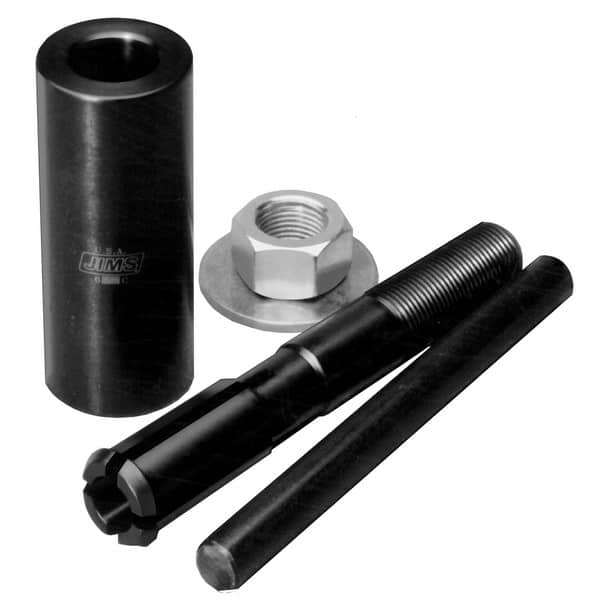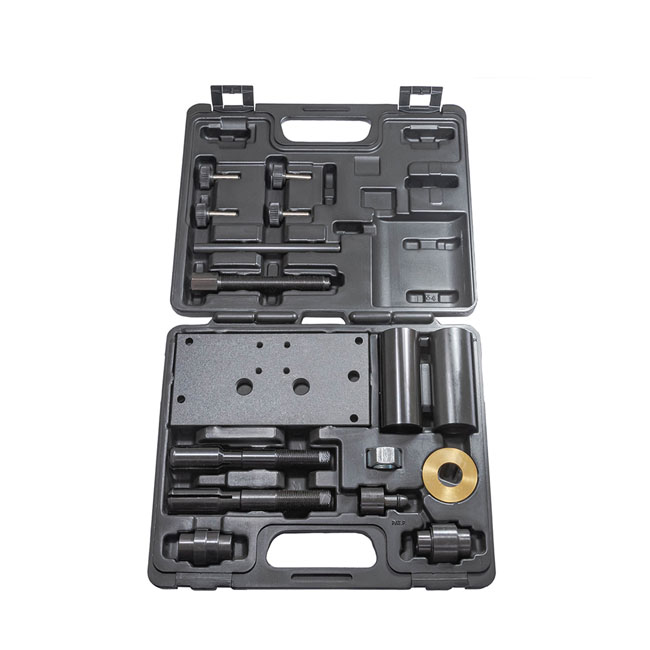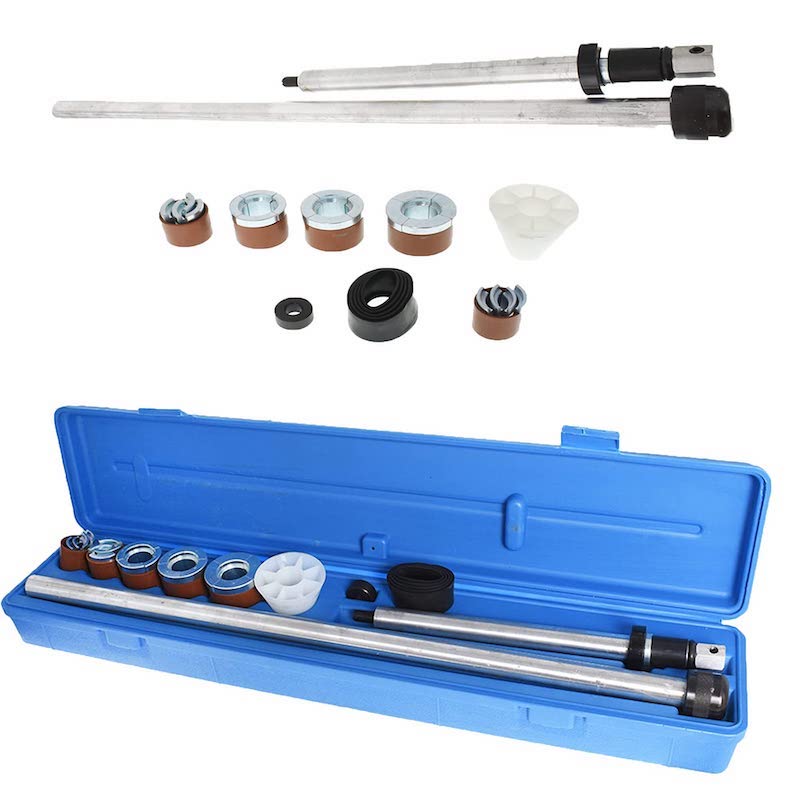Introduction
Cam bearing tools are an essential piece of equipment for anyone working on an engine. Whether you’re a professional mechanic or a DIY enthusiast, having the right cam bearing tool can make the difference between a smooth and successful engine repair and a frustrating and time-consuming experience. In this guide, we’ll explore the different types of cam bearing tools available, how to choose the right tool for your specific needs, and tips for using cam bearing tools effectively.
Part 1: Understanding Cam Bearings
The cam bearing tool is made up of a few components, including an expansion sleeve, a driver, and an installation or removal tool. The expansion sleeve can fit inside the bearing, and when the driver is inserted into the expansion sleeve and tightened. It expands the sleeve to the proper diameter. And allowing it to install the bearing into the engine block. The installation tool is used to drive the bearing into the engine block, while the removal tool is used to extract the bearings from the block.
Level 1: What are cam bearings?
Cam bearings are a crucial component of any engine, as they provide support and reduce friction for the camshaft. They are typically made of durable materials like bronze or steel, and they are designed to withstand the high speeds and extreme temperatures of the engine.
Level 2: Importance of cam bearings
Cam bearings play a vital role in the overall performance and longevity of an engine. Without properly functioning cam bearings, the camshaft can become damaged, leading to costly repairs and potential engine failure.
Part 2: Types of Cam Bearing Tools
There are different types of cam bearing tools available, including manual and hydraulic versions. The manual version requires hand-operated force to expand the sleeve and drive the bearing into the block, while the hydraulic version uses hydraulic pressure to accomplish the same task. The hydraulic version is often preferred due to its ability to apply more even and controlled force, resulting in more precise bearing installation.
Level 1: Manual cam bearing tools
Manual cam bearing tools are hand-operated and are typically used for smaller engines or occasional use. These tools are simple to use and are a cost-effective option for DIY enthusiasts.
Level 2: Hydraulic cam bearing tools
Hydraulic cam bearing tools use hydraulic pressure to remove and install cam bearings. These tools are ideal for professional mechanics or anyone working on larger engines, as they provide efficient and consistent results.
Part 3: Choosing the Right Cam Bearing Tool
A cam bearing tool is a specialized tool in the automotive industry to install or remove cam bearings in an engine block. These bearings support the camshaft and allow it to rotate smoothly, so it is crucial to have the right tool for the job. The tool typically consists of a series of adapters and a handle to apply pressure and guide the bearing into place. It is designed to fit specific engine models and makes the installation process easier and more precise. Using a cam bearing tool ensures that the bearings are properly seated and aligned, which is essential for the proper functioning of the engine.
Level 1: Consider the size and type of engine
When choosing a cam bearing tool, it’s essential to consider the size and type of engine you’ll be working on. Smaller engines may only require a manual tool, while larger engines will benefit from a hydraulic option.
Level 2: Quality and durability
Investing in a high-quality cam bearing tool is crucial for achieving reliable and precise results. Look for tools made from durable materials and with a reputation for longevity and performance.
Part 4: Tips for Using Cam Bearing Tools Effectively
Level 1: Proper installation techniques
Properly installing cam bearings is essential for the overall performance of the engine. Always follow the manufacturer’s instructions and use the appropriate tools for the job.
Level 2: Regular maintenance and cleaning
Keeping your cam bearing tools clean and well-maintained will ensure they continue to perform at their best. Regularly inspect the tools for any signs of wear or damage and replace any worn components as needed.
Part 5: Slide Hammer Cam Bearing Tool
Level 1: Cam Bearing Tool Types
There are several types of cam bearing tools available on the market, each designed for specific applications and engine types.
Level 2: Roller Style Cam Bearing Tool
One popular type of cam bearing tool is the roller style, which features rolling elements that allow for easier insertion and removal of cam bearings. This type of tool in high-performance engine builds where precision and ease of use are essential.
Level 3: Slide Hammer Cam Bearing Tool
Another type of cam bearing tool is the slide hammer style, which utilizes a hammering action to remove stubborn cam bearings. This tool is ideal for situations.
Part 6: Identifying Cam Bearing Sizes
Level 1: Understanding Cam Bearing Tool Sizes
It’s important to select the correct size cam bearing tool for your specific engine application in order to ensure proper fit and function.
Level 2: Identifying Cam Bearing Sizes
Before purchasing a cam bearing tool, it’s crucial to identify the size of the cam bearings in your engine. This can usually be done by referencing the engine’s specifications or by measuring the dimensions of the existing cam bearings.
Level 3: Selecting the Right Tool Size
Once you have determined the size of the cam bearings in your engine, you can select the appropriate cam bearing tool size for insertion and removal. Using the correct size tool will ensure a proper fit, preventing damage to the bearings or the engine block.
Part 8: Maintenance and Care for Cam Bearing Tools
Level 1: Maintenance and Care for Cam Bearing Tools
Proper maintenance and care of cam bearing tools is essential for optimal performance and longevity.
Level 2: Cleaning and Lubrication
After each use, cam bearing tools should be thoroughly cleaned to remove any debris or contaminants. Additionally, applying a light coating of lubricant to the tool’s surface can prevent rust and corrosion, ensuring smooth operation for future use.
Level 3: Storage
When not in use, cam bearing tools can prevent damage and maintain their precision. Proper storage can also prevent wear and extend the lifespan of the tool.
Conclusion
Using a cam bearing tool is important for a few reasons. This is crucial for maintaining the integrity of the engine and ensuring that it performs optimally. Additionally, using the tool allows for more precise bearing installation, which is essential for reducing friction, prolonging the life of the bearings, and maximizing engine performance.
Overall, the cam bearing tool is an essential piece of equipment for anyone involved in engine rebuilding or maintenance. Especially for those working on high-performance engines. Engine builders and mechanics can ensure that camshaft bearings are installed or removed with precision and care. And leading to better engine performance and longevity.
Cam bearing tool is an essential piece of equipment for anyone working on an engine, and choosing the right tool for your needs is crucial for achieving the best results. By understanding the different types of cam bearing tools available. Considering the size and type of engine you’ll be working on. Following proper installation techniques and maintenance tips. You can ensure that your engine repairs are smooth and successful. With the right cam bearing tool in hand, you can tackle any engine repair with confidence and precision.



